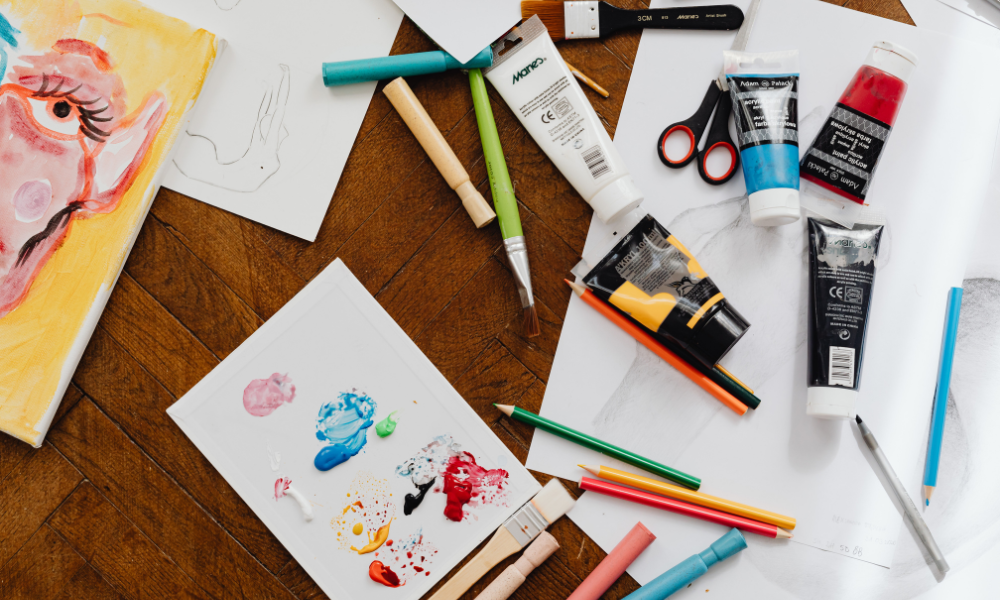Selecting the right paper is a crucial step in any art project. The paper you choose can greatly influence your techniques, ignite your creativity, and ensure that your artwork remains vibrant and preserved over time. With a vast array of papers available, it can be overwhelming to decide which one will best suit your needs. This guide delves into the factors you should consider when choosing art paper, whether you’re sketching, painting, or exploring various mediums.
Factors to Consider When Choosing Art Paper
- Medium and Technique
- The type of medium you’ll be using is one of the most critical factors in choosing the right paper. For example, watercolor artists need paper that can absorb and hold water without buckling, while pastel artists might prefer paper with a textured surface that can grip the pastel. Understanding the demands of your chosen medium will guide you in selecting paper that enhances your technique.
- Size and Format
- Art paper comes in a variety of sizes and formats, catering to different artistic needs and preferences. You can find paper measured in inches or millimeters, available in spiral-bound pads, gummed pads, sketchbooks, blocks, loose sheets, or even rolls for large-scale projects.
- Choosing the Right Size:
- Consider where and how you’ll be working. Smaller pads are more portable and suitable for quick sketches or studies, while larger sheets or rolls are ideal for expansive projects or detailed work.
- Format Considerations:
- Spiral-bound sketchbooks are excellent for artists who need to flip pages easily, while gummed pads allow you to tear out individual sheets cleanly. Blocks, where the paper is glued on all sides, prevent warping when using wet media like watercolors.
- Paper Weight
- The weight of the paper, measured in pounds (lb) or grams per square meter (gsm), is an indicator of its thickness and sturdiness. Heavier papers (usually 140 lb/300 gsm or more) are typically better suited for wet media like watercolors or acrylics, as they can withstand the application of water without buckling. Lighter papers (usually around 60-90 lb/130-190 gsm) are more appropriate for dry media such as pencils, charcoal, or pastels.
- Surface Texture
- The texture of the paper surface, also known as its “tooth,” plays a significant role in how your art will look and feel.
- Textured (Toothy) Papers:
- Ideal for dry media like charcoal, pastels, and pencils, as they provide a rough surface that helps the medium adhere better to the paper.
- Smooth Papers:
- Preferred for detailed work and fine lines, often used with pens, markers, or for mixed media where you want a clean, even application.
- Experimentation:
- For beginners or those exploring new styles, experimenting with different textures can help you discover what works best for your techniques and artistic preferences.
- Acid-Free Quality
- To ensure the longevity of your artwork, it’s crucial to choose acid-free paper. Acidic papers can lead to yellowing, fading, and deterioration over time, potentially ruining your hard work. Acid-free paper is designed to last, preserving the vibrancy and integrity of your art for years to come.
- Binding Type
- The way your paper is bound can impact your workflow and the durability of your work.
- Spiral Binding:
- Allows sketchbooks to lay flat, making it easier to work across the entire page.
- Gummed Pads:
- Enable you to remove sheets cleanly without tearing, which is useful if you plan to frame your work or store individual pieces.
- Stiff-Backed Designs:
- Some art pads come with a sturdy backing, allowing you to draw or paint without the need for a separate drawing board, perfect for on-the-go artists.
- Pages vs. Sheets
- When selecting a sketchbook or pad, it’s important to understand the difference between pages and sheets. A sheet of paper has two sides, both of which can be used, meaning that a 50-sheet pad provides 100 pages of workspace.
- Usage Considerations:
- If you plan to use only one side of the paper for each artwork (perhaps for framing or displaying in a portfolio), you’ll need to consider the number of sheets, not pages, when calculating how much paper you’ll need.
Final Thoughts
Choosing the right art paper is a blend of understanding your medium, knowing your preferences, and being aware of the conditions under which you’ll be working. Whether you’re a seasoned artist or just starting your creative journey, the right paper can make a significant difference in the quality of your work. By considering factors such as size, weight, texture, and binding, you’ll be well-equipped to select the perfect paper that complements your artistic vision and enhances your creative expression.




